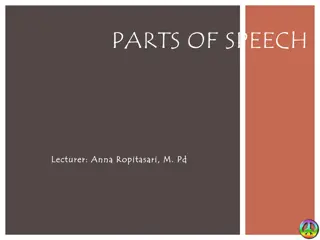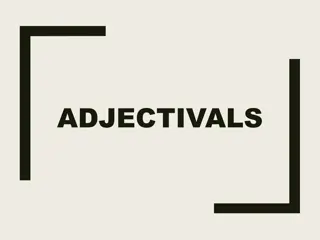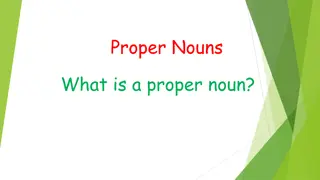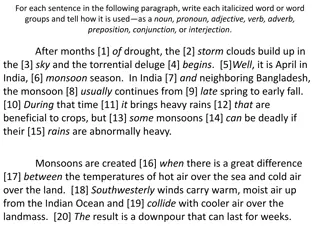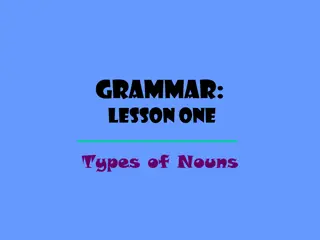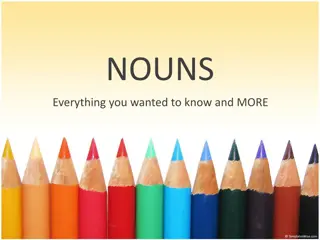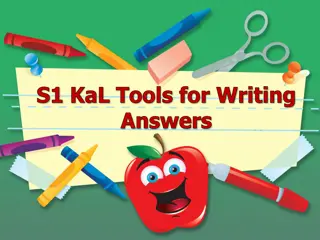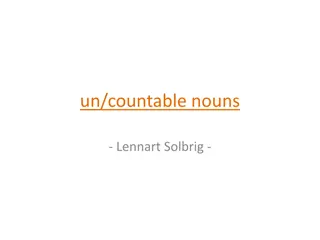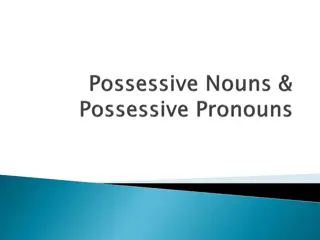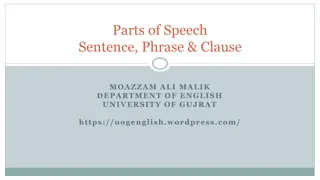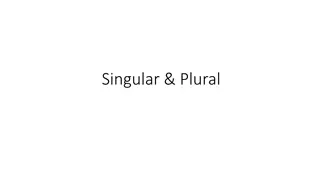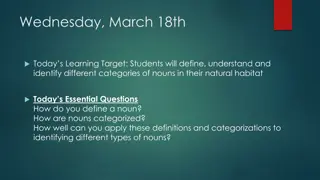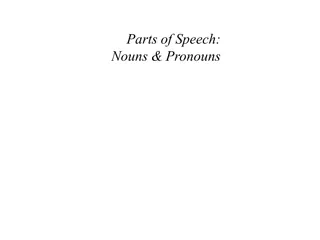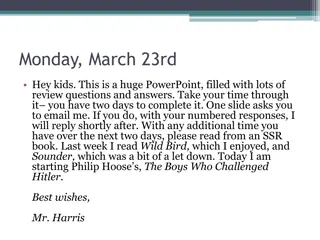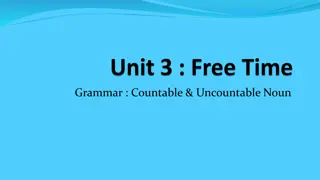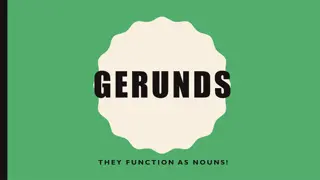Understanding Different Types of Nouns in English Language
Explore the diverse world of nouns, including common vs. proper nouns, concrete vs. abstract nouns, and human vs. non-human nouns. Learn how to differentiate between them and understand their unique characteristics through visual examples and explanations.
Download Presentation

Please find below an Image/Link to download the presentation.
The content on the website is provided AS IS for your information and personal use only. It may not be sold, licensed, or shared on other websites without obtaining consent from the author. Download presentation by click this link. If you encounter any issues during the download, it is possible that the publisher has removed the file from their server.
E N D
Presentation Transcript
Types of Nouns Asst. Inst. Yasir Salih Basic Education College English Department First Class Place Person Thing Idea
Types of Nouns Common/ Proper Abstract/ Concrete Collective Human/ Non-Human Plural/ Singular A noun will always be a person, place, thing or idea!
Common/ Proper Nouns A common noun is a general name for a person, place, thing or idea. Example- theater A proper noun is a name of a specific person, place, thing or idea. Example- Palace Theater Only proper nouns need to be capitalized, so a big clue is if the noun is capitalized.
Concrete Nouns These nouns are the ones we can visualize. Examples: Table, Rock, Flag, Hairdresser you can SEE you can TOUCH you can TASTE you can HEAR you can SMELL
Concrete Nouns have Sight, Touch, Hear, Smell, Taste Leaves- Touch Disturbance- Hear Sour- Taste Stench- Smell Smoke- Sight
Abstract Nouns These nouns are usually ideas or concepts with no clear visual image. Ideas Thoughts Feelings/ Emotions Concepts Examples- Sincerity, Anger, Happiness, Hope, Love, Intelligence
Think of an image for HOPE Everyone has a different image in mind! These abstract nouns can only be described and imagined. This is why abstract nouns often have symbols to show meaning.
Human/ Non-Human Nouns Human boys girls Non-human animals nature objects
Choosing between human and non- human nouns is important when talking about a noun in a sentence. The rock smiled. WRONG! The boy smiled. Who is making that noise? (A person) What is making that noise? (Something nonhuman!)
Human/ Non-Human Nouns A good test to decide if a noun is human or non-human is to ask Is the noun alive? Could I do this? Could a rock do this?
Collective Nouns Collective nouns name a group of people or things. Examples- crew, cast, audience, class, committee
Plural/ Singular Singular Rule Plural boy, girls Add -s boys, girls echo, hero Add s to a few -o endings echoes, heroes box, church Add es to -s, -sh,-ch, -x, -z endings boxes, churches melody, fly Change y to i and add - es to y endings. If a vowel comes before the -y, add s. melodies, flies monkey, day monkeys, days thief, half Change f to v, add es to most. Add s to a few f endings thieves, halves roof, cuff roofs, cuffs corn, tuna, fish Same spelling corn, tuna, fish woman, foot Irregular plural forms women, feet
Nouns that fit who you are! common noun: teacher abstract noun: creativity Plural noun: opportunties Proper noun:Ms. Martin concrete noun: female singular noun: Oklahoman
Make your own to describe you! common noun Plural noun abstract noun Proper Noun concrete noun singular noun


